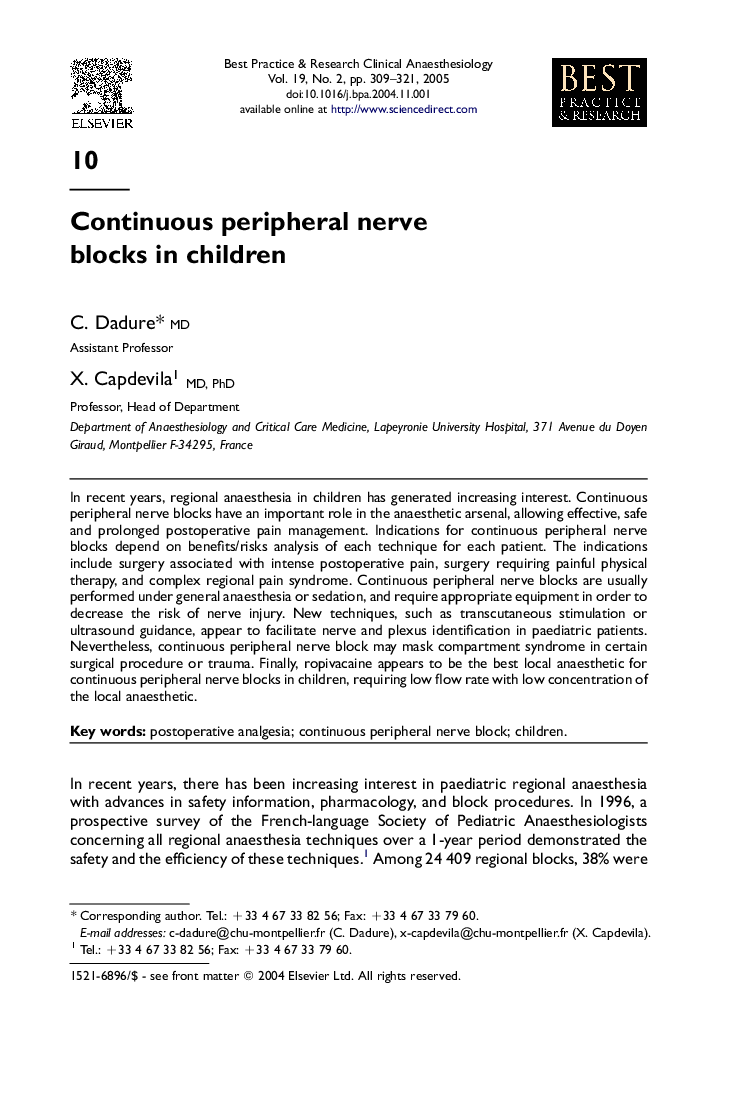| Article ID | Journal | Published Year | Pages | File Type |
|---|---|---|---|---|
| 9092603 | Best Practice & Research Clinical Anaesthesiology | 2005 | 13 Pages |
Abstract
In recent years, regional anaesthesia in children has generated increasing interest. Continuous peripheral nerve blocks have an important role in the anaesthetic arsenal, allowing effective, safe and prolonged postoperative pain management. Indications for continuous peripheral nerve blocks depend on benefits/risks analysis of each technique for each patient. The indications include surgery associated with intense postoperative pain, surgery requiring painful physical therapy, and complex regional pain syndrome. Continuous peripheral nerve blocks are usually performed under general anaesthesia or sedation, and require appropriate equipment in order to decrease the risk of nerve injury. New techniques, such as transcutaneous stimulation or ultrasound guidance, appear to facilitate nerve and plexus identification in paediatric patients. Nevertheless, continuous peripheral nerve block may mask compartment syndrome in certain surgical procedure or trauma. Finally, ropivacaine appears to be the best local anaesthetic for continuous peripheral nerve blocks in children, requiring low flow rate with low concentration of the local anaesthetic.
Related Topics
Health Sciences
Medicine and Dentistry
Anesthesiology and Pain Medicine
Authors
C. (Assistant Professor), X. (Professor, Head of Department),
